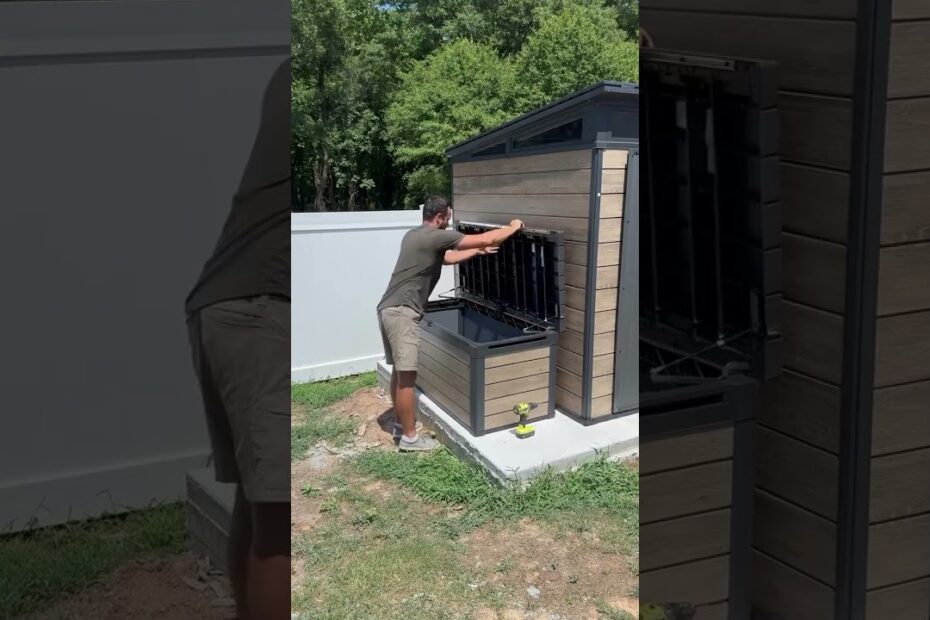Why a Backyard Shed is the Ultimate Solution for Storage and Extra Space
Your House is Begging for Mercy (And You Should Listen)
Let’s face it: your home is currently doubling as a Tetris grid for lawnmowers, holiday decorations, and that collection of garden gnomes secretly plotting a coup. Closets are screaming. Attics are haunted. Garages have become a no-go zone unless you enjoy playing “floor is lava” with power tools. Enter the backyard shed—a rebellion-free zone where stuff goes to chill. Think of it as a superhero lair, but instead of capes and gadgets, it’s storing your 37th unused juicer.
The Swiss Army Knife of Square Footage
A shed isn’t just a box with a door—it’s a multi-dimensional space wizard. Need a yoga studio? Boom. A cat palace for your feline overlord? Done. A bunker for your secret candy stash? *No judgment here*. With a shed, you can:
- Host Important Meetings (with yourself, discussing whether to buy more plants).
- Hide Evidence of questionable DIY projects (RIP, “accidental” birdbath).
- Become a Local Legend by claiming it’s a “tiny home” (air mattress not included).
Cheaper Than Therapy, More Fun Than a Storage Unit
Renting a storage unit is like paying someone to hold your baggage—literally. A shed? It’s a one-time investment in sanity. No monthly fees, no awkward small talk with the storage locker manager, and no existential dread when you forget the unit’s passcode. Plus, it’s a socially acceptable escape hatch when your in-laws visit. “Oh, I’d love to chat about politics, but I have to go… um… reorganize my shed. Bye!”
BONUS: Sheds don’t care if you store skeletons (literal *or* metaphorical). They’re just happy to be included.
7 Costly Backyard Shed Mistakes to Avoid (And How to Build One That Lasts)
“Ignoring Local Codes” Is Just Fancy Talk for “Please, Sue Me”
Sure, building a shed without checking zoning laws feels rebellious—like feeding raccoons espresso shots. But forgetting permits is a one-way ticket to Neighbor Drama Mountain. Imagine your 12-foot “tiny tool palace” declared illegal because it’s 3 inches too tall. Avoid becoming a local legend by:
- Asking your municipality if sheds need a permit, a handshake, or a blood oath.
- Measuring twice, unless you enjoy dismantling sheds in the rain.
Building on a Foundation of Hopes, Dreams, and Sand
A shed without a proper foundation is like a marriage built on mutual love of nachos—it’ll crumble. Concrete slabs, gravel pads, or pressure-treated skids are your friends. Avoid using old pizza boxes (yes, Dave from Facebook suggested it) or “just the dirt, man.” Pro tip: If your shed wobbles when a squirrel sneezes, start over.
The Great Door Debacle: A Tragicomedy
Placing doors where the wind treats them like Olympic sprinting hurdles is a classic oopsie. Fling-open doors smash plants, scare cats, and launch shovels into oblivion. Position doors away from prevailing winds—or install a door that opens inward, like a polite vampire. Bonus points if it doesn’t whack you in the face during a storm.
Forgetting That Wood ≠ Indestructible Superhero Material
Using raw, untreated lumber? That’s basically building a termite buffet. Invest in pressure-treated wood—it’s like giving your shed a vaccine against rot and insects. Still want that “natural” look? Fine, but don’t cry when your shed becomes a moss-covered hobbit hut by next fall. Seal it, paint it, or wrap it in aluminum foil (we don’t judge).
